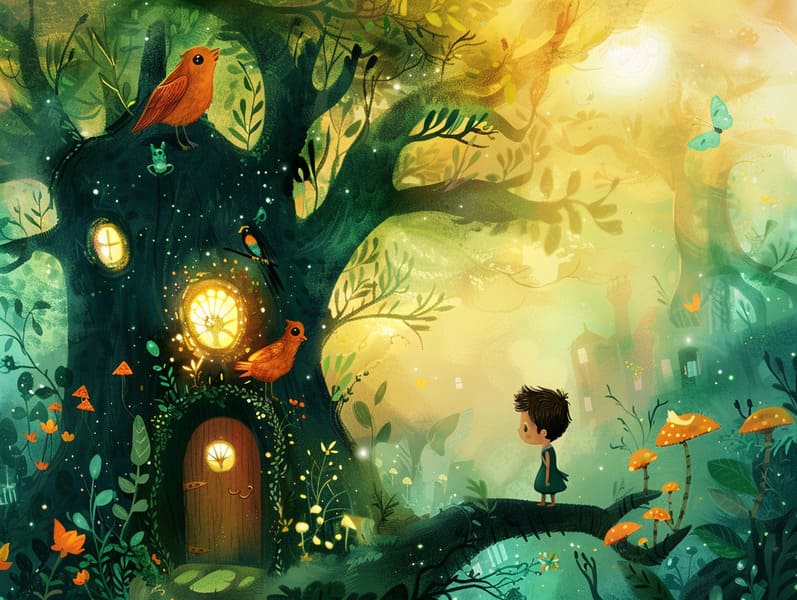Delving into the Background of Vintage Fairy Tales and Its Continued Spell.
Delving into the Background of Vintage Fairy Tales and Its Continued Spell.
Blog Article

Old fairy tales have deep roots. These tales have been spoken from one generation to the next centuries before they were ever put on paper. They originated from a variety of cultures, including Western traditions. They were initially passed along among adults, often carrying themes and messages pertaining to the societal norms and beliefs of the time.
Jacob and Wilhelm Grimm, the two Grimm brothers, were among the first to collect and release many of these beloved stories. Their compilation, "Grimm's Fairy Tales," included stories like "Cinderella," "The Bread Crumb Trail," and "Little Snow White," which have since become mainstays in the world of traditional fairy tales. Similarly, the Danish author's imaginative stories, such as "The Mermaid's Tale," and "The Duckling's Story," have captivated hearts worldwide, cementing their place in the pantheon of classic fairy tales.
Despite their historical roots, these tales remain as pertinent as ever, especially as nighttime stories for kids. These magical stories are now available in different formats, including artistically illustrated books, captivating animations, and online storybooks.
Their enduring popularity can be linked to several enchanting factors:
Important Morals: Classic fairy tales often whisper important moral lessons. Stories like "The Boy Who Cried Wolf" teach the benefit of being truthful, while "The Race of the Tortoise and the Hare" emphasize the virtues of perseverance and humility. These stories offer kids clear distinctions between right and wrong, developing their moral compass in a soft yet impactful way.
Compassion and Knowledge: Timeless fairy tales frequently showcase individuals facing problems and hurdles, encouraging listeners to identify with their struggles and applaud their triumphs. For instance, "Beauty's Beast" conveys the necessity of seeing beyond the surface to realize the inner self of a individual, nurturing sympathy and discernment.
Cultural Understanding: Many ancient fairy tales are interwoven with the cultural contexts from which they developed. Immersing in these tales can provide delightful insights into different beliefs, building a sense of world insight and awareness.
Creativity and Imagination: The whimsical elements in old fairy tales—spells and potions—stimulate children’s fantasies. These fairy tales lead readers to fantasy realms, revitalizing fantasy-filled thoughts and a sense of amazement that continues a lifetime.
Traditional fairy tales are not only spellbinding read more but also enlightening. They serve as whimsical tools in nurturing various cognitive and affective skills in young ones. When classic fairy tales are recited, they strengthen communication skills by showing new word meanings and complicated sentence structures. This practice also enhances auditory skills and mental focus, as little ones listen intently, anticipating to see what happens next.
Furthermore, deliberating the themes and characters of ancient fairy tales can enhance thinking skills and intellectual skills. The young are taught to discover patterns, expect results, and know cause and effect. These deliberations also help children say their thoughts and feelings, advancing their emotional intelligence.
In today’s cyber age, the proliferation of web-based fairy tales has made these stories more obtainable than ever. Websites and digital apps extend large libraries of Grimm's fairy tales that can be viewed or listened on anytime, anywhere. Fairy tales read aloud are particularly common, offering an engaging way for young readers to immerse in these entrancing tales. Voice books and spoken videos take characters and settings to life, often joined by bewitching soundtracks and harmonies that augment the narrative journey.
The lasting appeal of old fairy tales lies in their ability to evolve to current eras while keeping their central values. Contemporary versions of these fairy tales often showcase more diverse protagonists and modern settings, making them relatable to today’s audience. However, the basic principles of boldness, understanding, and justice remain unchanged, continuing to reach readers of all ages.
Traditional fairy tales also offer a sense of security and knowability. They afford a coherent narrative with a transparent beginning, middle, and end, often drawing to a close with the wrap-up of conflicts and the triumph of good over evil. This uniformity can be relieving for young readers, affording a sense of sturdiness in an dynamic world.
Timeless fairy tales continue to allure and inform new generations, maintaining their charm and meaningfulness in modern society. As bedtime stories for kids, they feature a perfect blend of captivation and insight, supporting moral values, empathy, and creativity. The presence of online fairy tales and the commonness of fairy tales spoken secure that these timeless fairy tales remain attainable to new generations.
By holding onto and sharing these tales, we continue to pay tribute to the rich tapestry of storytelling and cultural heritage. Whether you are seeing a vividly illustrated book, viewing a digital collection, or listening to an read-aloud book, the appeal of Grimm's fairy tales is always within reach. These tales point out of the unending presence of storytelling and its ability to bond us across eras and regions.
No matter if you are exploring a vividly illustrated book, accessing a virtual collection, or hearing an audiobook, the fascination of Grimm's fairy tales is always within reach.
These tales reveal of the steadfast magic of tales and its ability to draw us together across generations and cultures, forming a connection that fascinates and enlightens alike.